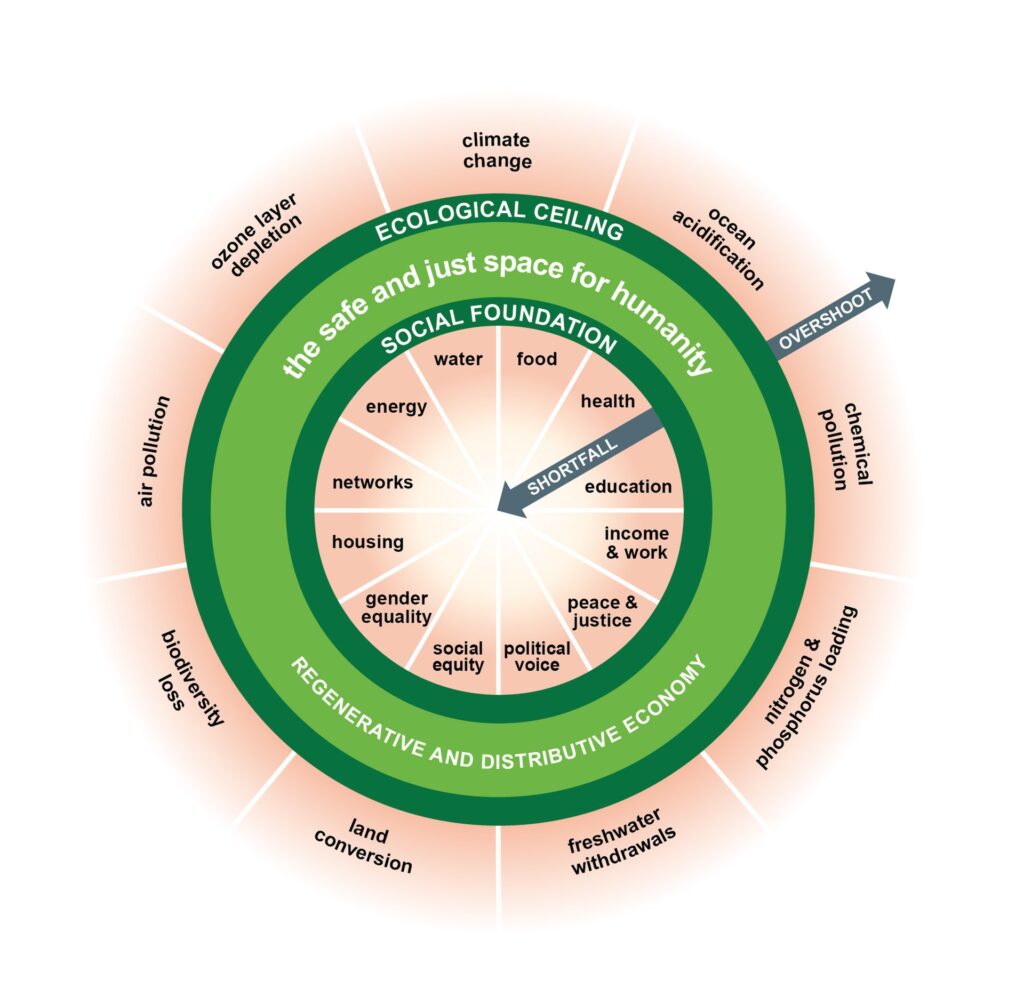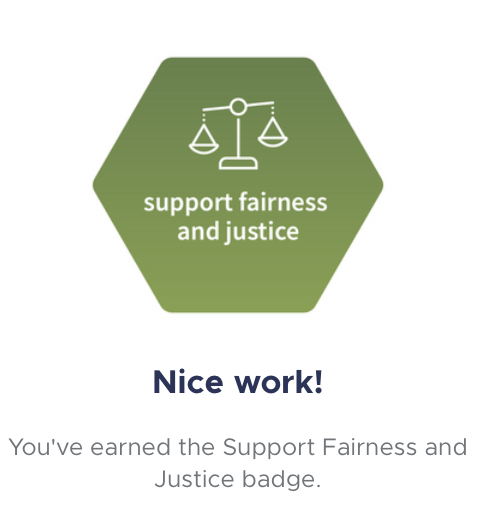I’m taking at my pace the free online course “Foundations of humane technology” by the Center for Humane Technology (whom I had heard of after watching the excellent documentary “The Social Dilemma”.) These are my notes.
- Module 1 – setting the stage
- Module 2 – respecting human nature
- Module 3 – minimizing harmful consequences
- Module 4 – centering values
- Module 5 – creating shared understanding
- Module 6 – supporting fairness & justice
- Module 7 – helping people thrive
- Module 8 – ready to act
This module explores the goal ultimately of humane technology: respecting human nature, minimizing harmful consequences, centering (on) values, creating (fostering) shared understanding, supporting fairness and justice all converge towards the goal of helping people thrive.
🤔 Personal reflection: Thriving
What does thriving mean to you? Imagine a thriving world, locally, and globally. What role do persuasive technologies like social media play in that world?
Thriving ranges from succeeding to growing, to enjoying oneself, in the pursuit of something of one’s choice. It encompasses all the stages between setting out a goal and the outcome. Social media can be both a blessing and a curse because it has the ability to inspire, motivate, inform, but also the ability to distract, confuse or harm.
What considerations and design choices enable thriving?
- Aim for durable benefits.
- Support people in relating to pain in ways that enable learning, resilience, personal agency.
- Develop people’s capacity for: gratitude, creativity, learning.
- Help people adapt to change and respond wisely to life’s circumstances, rather than react compulsively.
- Simplify features, journeys.
- Respect the natural flow of human life, respect natural human boundaries.
- Help people figure out what wise action to take next, recognising that we can change how we contemplate the past and how we approach the future, but “right now” can’t be changed, and is therefore an opportunity to place our attention and energy on the right solutions.
- Self-improve, or engage in personal development yourself, because the more we understand ourselves, the better we can be of service to others.
- Prompt to care, be kind and considerate. Design for a kinder world.
- Learn from the top five regrets expressed by the dying:
- I wish I’d had the courage to live a life true to myself and not what others expected of me.
- I wish I hadn’t worked so hard.
- I wish I’d had the courage to express my feelings.
- I wish I’d stayed in touch with friends.
- I wish I’d let myself be happier.
- Consider a “regret metric” to assess the performance or relevance of a technology or feature.
- Mind the bigger lens, not just individuals’ considerations or short-term interests.
- Remember that design choices must fit within the ecological ceiling and the social foundation that ensures that no one is left falling short of life’s essentials (such as food, water, shelter, electricity, safety.) (cf. donut model)
- Remember that addiction narrows the range of pleasurable experiences, making it harder to enjoy not just the object of the addiction but everything else. This results in the addiction(s) becoming less and less rewarding, and leads people to feel increasingly empty.
- Re-balance user engagement (simple consumption) and creativity, as there is more reward in the latter while there is value in some external validation that likes and shares afford.
- Shift paradigm: from “compete for attention” to “attention is sacred“.
Donut model: Path to regenerative systems (sustainability)
I’m digressing to focus on this aspect from Module 3 “minimizing harmful consequences” which I had neglected to highlight last year when I took the module, but resonates particularly today.

If we wanted (duh!) to create economic systems in service to ecological, cultural, and psychological regeneration, Kate Raworth’s model of Donut Economics describes how economic systems must be productive enough to meet human needs and contained enough to avoid exceeding ecological limits.
There is growing recognition that humans have gone beyond our ecological and social limits. There is increasing pressure to shift the structure of markets and create space for radically new kinds of regenerative technology to emerge. But there is incredible resistance, dammit.
Technology can deliver a twisted version of thriving
“We value creators and want to create a place where they can show off their brilliance, grow their audience, and make real money.”
Often used by products like TikTok
“We’re a place for fun, inspiration, and ideas that matter. We show people the most relevant content so that they can enjoy themselves and lead more informed and meaningful lives.”
Often used by products like YouTube/Google
“We help small business owners find customers who’ll love their products so that their businesses can grow and thrive.”
Often used by products like Instagram
🤔 Personal reflection: Examining flawed stories
Technology companies often have compelling stories about how their products contribute to human thriving. In what way are they authentic? In what ways do they mimic thriving in toxic ways? Then consider how a product you’ve worked on or use may seek to help people thrive. Does that product define thriving accurately?
There is truth in the statements, such as “show off” and lies such as “lead more informed and meaningful lives”. The rest appeals to shallow but powerful temptations. The empty promises may be true for some lucky few. The rest can get stuck in the maelstrom of youtube-like recommendations, and the infinite rabbit-hole of the “more like this”.
Most of the sites and social networks that are free are guided by their own sustainability and therefore prioritise users’ actual benefits last. Unless these are developed by independent developers and/or developed as free and open source software by people who most of the time are already more aware and sensitive to ethics. More and more people seem to realise that if a product is free, they are the product; and therefore there is a teeny bit more interest in supporting developers who make a living out of developing software for people, to fulfill specific outcomes.
Design for thriving: Principles
Paradigm shifting:
| current paradigm | paradigm shifting |
| Compete for attention | Attention is sacred |
| Center engagement and growth | Center individual and societal thriving |
1. Protect attention at all cost
“Relentless hijacking of attention is a direct assault on autonomy (and on thriving).”
Center for Humane Technology
Attention is sacred. Like our time, attention is finite. Make design choices or consider the following:
- Design to minimize attention-grabbing
- Design to add delays or helpful friction to keep attention and intention aligned
- Increase users’ control over their own attention
2. Design for intentionality
“Thriving requires us to reflect on, set, and then act on our intentions.”
Center for Humane Technology
Because sometimes, the conditions for meaningful rest are better than those for optimum engagement, made design choices or consider the following for user experience:
- Prioritize users’ intention over capturing their attention, e.g., choosing the right default incentives (for example, on iOS, a long tap on the Facebook app icon will show a menu offering to “write post”, “upload media”, “search”.)
- Understand the difference between “honoring intentions” and “manufacturing desire”.
- Design your homepage in a way that it pulls towards what the users intend.


